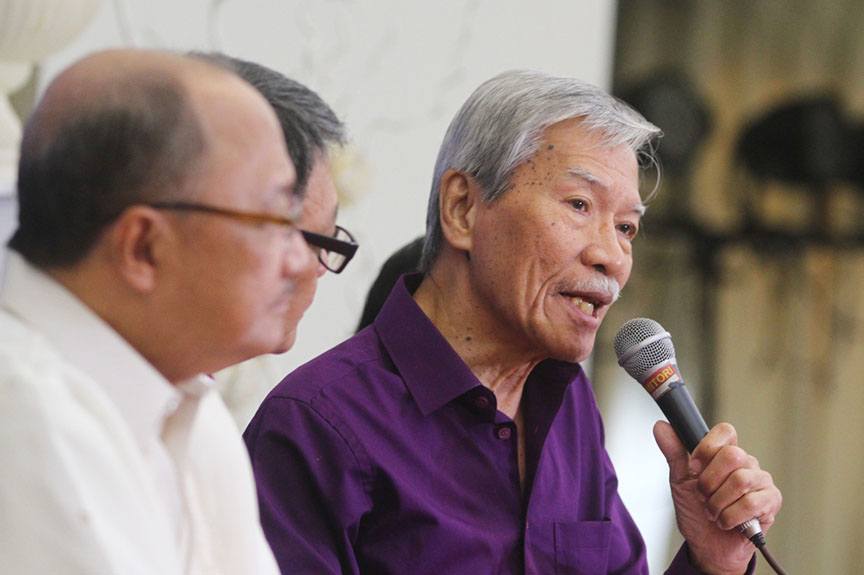
The forging of bilateral ceasefire agreement will not guarantee that there will be no more armed encounters between the government (GRP) and the New Peoples’ Army, but will be necessary so that neither of the two parties will back out from the peace talks.
During the Mindanao Peace Forum at the Homitori on Wednesday, GRP peace panel member Atty. Antonio Arellano said a bilateral ceasefire document would not totally eradicate the possible eruption of the armed encounters but would clearly define what acts would constitute as violations based on the agreed document by both parties.
“Would you expect shooting now? Why not? We have to expect that because the rebellion is ongoing,” he said.
On the previous unilateral ceasefires, Arellano said: “Although there are some instances of unfortunate incidents, but in general, substantially the ceasefire was held until it was declared ended.”
He said that, in the previous declaration, the violations were not stated because there was “no agreement as to what acts will constitute violations.”
“Before the declaration of an indefinite unilateral ceasefire by both the GRP and the NDFP, of course, the context was, there is armed conflict. You know what happens in armed conflict. When both agreed separately to unilaterally declare ceasefire, it was a ceasefire, which was voluntary on the party,” Arellano said.
He said a bilateral agreement will put in place some monitoring mechanisms to keep track of the compliance of the government forces and NPA rebels.
Although they have yet to discuss in detail the bilateral document in the next round of peace negotiations set on April 2 to 6 in Oslo, Norway, he said they may include certain areas off-limits to military troops and NPA combatants.
“These are still subject to further discussions but the discussions are ongoing already and to tell you frankly we are all very hopeful that in due time matatapos na yung agreement at tuloy-tuloy yung usapan (the agreement will be completed at the talks can proceed unhampered),” Arellano said.
He said he is hopeful that in the fourth round of talks, they would come up with an agreement signed that is “already bilateral in character.”
Last March 12, Secretary Jesus Dureza, Presidential Adviser on the Peace Process, said the GRP and the NDFP peace panels agreed during the backchannel talks held from March 10 to 11, 2017 in Utrecht, The Netherlands to revive the peace talks after a month of impasse and reinstate the unilateral ceasefire, which will be effective “as soon as their respective forces shall have been informed.”
On February 1, 2017, NPA spokesperson Jorge Madlos announced the lifting of its unilateral ceasefire effective 11:59 p.m. on February 10. President Rodrigo Duterte likewise made an announcement on February 3 that the government was lifting its own unilateral ceasefire.
For his part, NDF consultant Satur Ocampo said that once a bilateral ceasefire document is signed, any incidents of violence will not compel one side to suspend the talks so that it will not affect the main agenda of the discussions.
Ocampo also dismissed rumors the top leadership of the revolutionary government has no longer control over their own forces on the ground.
“Hindi kasi nauunawaan yung structure ng command sa revolutionary movement (The structure of command of the revolutionary movement was not understood well.) The NPA is essentially army organized by the CPP. Ngayon, ang papel ng NDFP is working (Now, the role of NDFP) in building alliances in the formative stages of the revolutionary government,” he said.
The NDFP, Ocampo said, has been nominated by the CPP to represent the revolutionary forces in peace talks.
“The NDFP is an organization that represents the formative stages of an alternative government, para yung parity ng negotiating table ay on the political level. So in effect, hindi nagcocomand ang NDF sa NPA (the NDF does not give command to NPA),” he said.
Arellano said that there was no specific timeline agreed as to when the bilateral ceasefire agreement will be signed by both parties.
He said the GRP peace panel will meet next week to prepare for the next round of peace talks on April 2 to 6 in Oslo, Norway.
Arellano said the GRP and NDFP panels will flesh out the Comprehensive Agreement on Socio-Economic Reforms (CASER), considered as the highlight of the peace negotiations.
During the second round of peace talks held from October 6 to 9 in Norway, both panels agreed on the common draft frameworks and outlines on the three remaining substantive agenda on socio-economic reforms, political and constitutional reforms, and end of hostilities and disposition of forces.
Arellano said that it is important for both panels to settle CASER first before they could begin the discussions on Political and Constitutional Reforms (PCR).
“Ang agreement was to prioritize ang CASER and then at the same time, PCR. Ang CASER is socio-economic reforms. We have to identify first what are the socio-economic reforms before you can identify the institutionalization process,” he said.
http://www.mindanews.com/top-stories/2017/03/grp-ndfp-talks-bilateral-truce-necessary-but-zero-armed-conflicts-not-guaranteed-says-govt-negotiator/

No comments:
Post a Comment
Note: Only a member of this blog may post a comment.